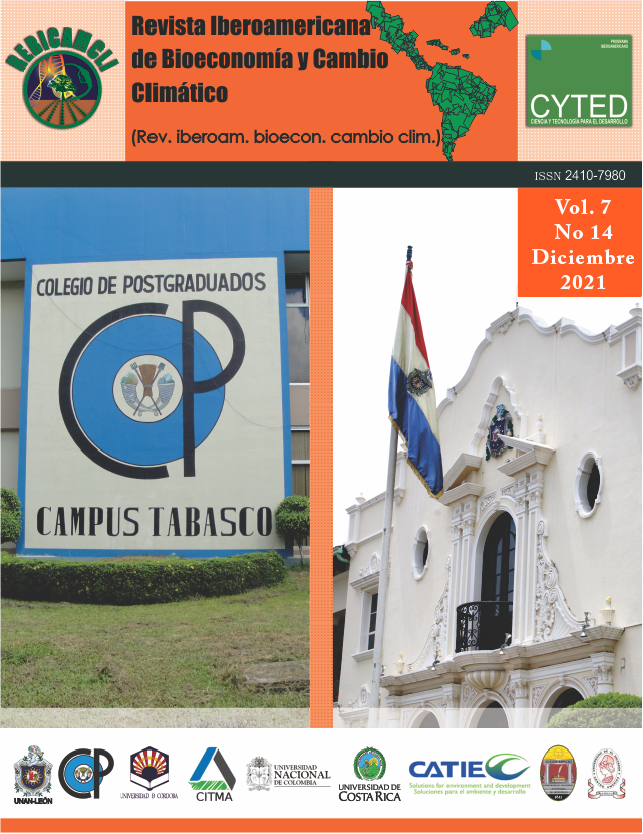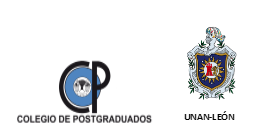Pathogenicity of entomopathogenic fungi in termites in Moringa oleifera plantations, Posoltega Nicaragua
DOI:
https://doi.org/10.5377/ribcc.v7i14.12851Keywords:
Nasutitermes corníger, Entomapathogenic, Termita, Moringa Oleifera, Metarhizium anisopiliae, Beauveria bassianaAbstract
Termites are pests of economic importance in agroforestry and agricultural systems. The research was carried out at the Fidel Castro Ruz Reference Center of the Agricultural Technological Institute of the Posoltega municipality in agreement with UNAN-LEON. The objective was to determine the incidence and identify the species of termites present in the Moringa oleifera plantation and evaluate the pathogenicity of entomopathogenic fungi under field conditions. The research is of a quasi-experimental type, 3 treatments were evaluated Beauveria bassiana with a concentration of 3.6 x 107 conidia / ml and Metarhizium anisopliae with a concentration of 2.28 x 106 conidia / ml and chemical treatment (Cypermethrin), dose of 6cc / liter of water. In a population of 16 plants with termite hives per treatments for a total of 48 experimental units. The application of the treatments was carried out by drilling each hive, in its four cardinal points (north, south, east and west) spraying with a manual knapsack pump. Efficacy was determined by the biological effectiveness formula. 39% of the Moringa oleifera moringa population was found to be infected by termites. The species of termites present in the Moringa oleifera plantations was Nasutitermes corníger. The effectiveness of the treatments presented sig. Statistics (P = 0.000) being Cypermethrin that presented the best percentage of effectiveness with average values of 96% followed by M. anisopliae with effectiveness of 24% and B. bassiana with 7%. The percentages of sporulation presented sig. Statistics. (P = 0.0033) B. Bassiana with 31% and M. anisopliae presented 69%.
Downloads
381
HTML (Español (España)) 0
Published
How to Cite
License
Copyright (c) 2021 Ibero-American Journal of Bioeconomy and Climate Change

This work is licensed under a Creative Commons Attribution-NonCommercial-ShareAlike 4.0 International License.
Copyright © Rev. iberoam. bioecon. climate change (Graduate School and UNAN-León, School of Agricultural and Veterinary Sciences / Department of Agroecology / Center for Research in Bioeconomy and Climate Cahnge (CRByCC).







